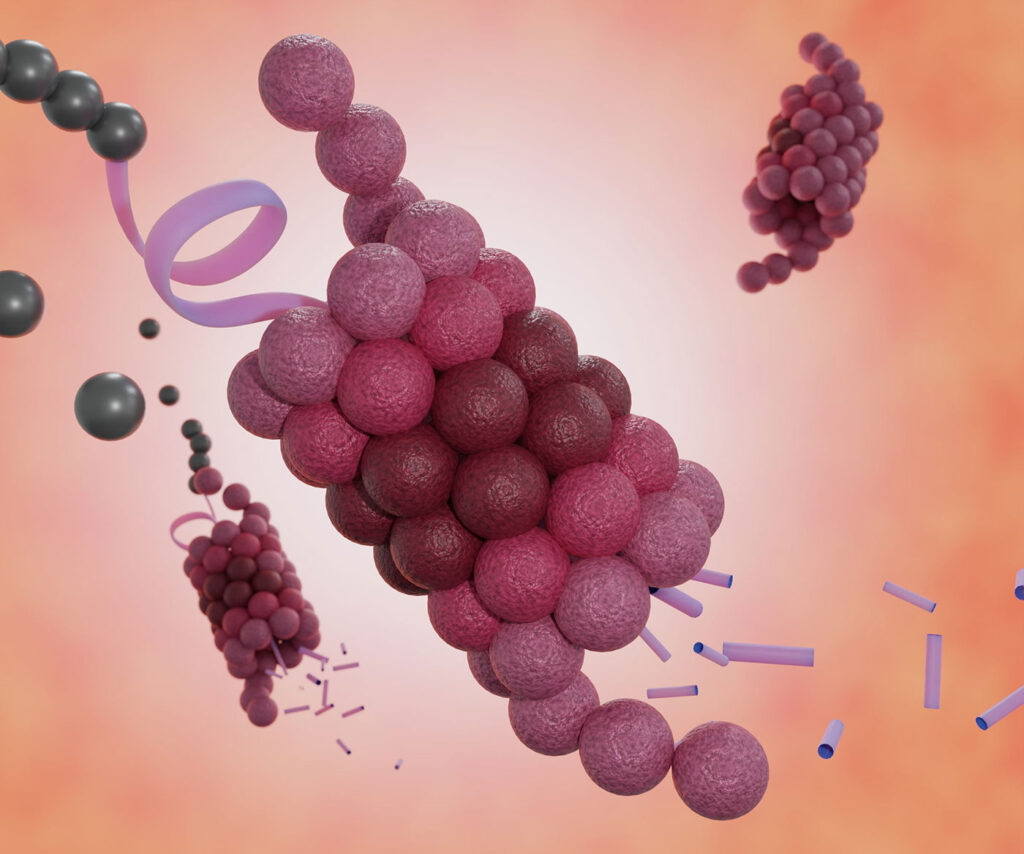Dismantling Disease: How Protein Degraders Are Changing Drug Discovery
In the rapidly evolving world of medicine, few innovations hold as much promise—or disruptive potential—as protein degraders. These small molecules are revolutionizing how we treat diseases once considered “undruggable,” from

In the rapidly evolving world of medicine, few innovations hold as much promise—or disruptive potential—as protein degraders. These small molecules are revolutionizing how we treat diseases once considered “undruggable,” from cancer and neurodegeneration to autoimmune conditions.
Instead of simply blocking proteins, like traditional drugs, protein degraders eliminate them entirely, offering a new frontier in therapeutic design.
Welcome to the era of Targeted Protein Degradation (TPD)—where the future of precision medicine is being reshaped at the molecular level.
What Are Protein Degraders?
Protein degraders are engineered molecules that hijack the cell’s natural garbage disposal system—the ubiquitin-proteasome pathway—to tag disease-causing proteins for destruction.
The most well-known class of protein degraders is called PROTACs (PROteolysis TArgeting Chimeras). These bifunctional molecules work by:
- Binding to the target protein you want to eliminate
- Binding to an E3 ubiquitin ligase, which tags the target with ubiquitin
- Directing the protein to the proteasome, where it is broken down
Unlike conventional inhibitors, which must continually occupy a protein’s active site to block function, PROTACs remove the protein entirely—often with greater specificity and potency.
Why Is This So Revolutionary?

Traditional small-molecule drugs can only target about 20% of the human proteome, primarily those with well-defined active sites like enzymes or receptors.
That leaves 80% of disease-relevant proteins essentially “undruggable.”
Protein degraders bypass this limitation, allowing us to:
- Target scaffold proteins, transcription factors, and regulatory proteins
- Overcome resistance caused by mutations that reduce drug binding
- Achieve more sustained and complete therapeutic effects
In essence, degraders aren’t just turning the page in drug development—they’re rewriting the book.
Industry Momentum and Investment
The rise of protein degradation has triggered a wave of biotech investment and research collaborations:
- The global protein degradation therapeutics market was valued at $570 million in 2022 and is projected to reach $5.6 billion by 2032, according to Precedence Research.
- Leading biotech firms like Arvinas, C4 Therapeutics, Kymera Therapeutics, and Nurix Therapeutics are pioneering first-in-class degraders.
- Major pharmaceutical players—Pfizer, Novartis, Roche, and Bayer—have launched degradation-based drug discovery programs.
- Over 25 protein degrader candidates are currently in clinical trials, mostly in oncology and hematology.
This is not a scientific novelty—it’s a commercial and clinical movement.
Clinical Progress: Where Are We Now?
The most advanced PROTAC therapies are in Phase I/II clinical trials, with a strong focus on oncology.
Notable programs include:
- ARV-110 (Arvinas): Targets the androgen receptor in metastatic castration-resistant prostate cancer.
- ARV-471 (Arvinas/Pfizer): Aims at the estrogen receptor in ER-positive/HER2-negative breast cancer.
- KT-474 (Kymera Therapeutics): Targets IRAK4 for autoimmune and inflammatory diseases, including atopic dermatitis.
Early data shows promising efficacy, particularly in tumors resistant to conventional therapies. Some degraders have shown tumor shrinkage where inhibitors failed.
Beyond Cancer: Expanding the Horizon
While oncology leads the charge, protein degradation is making inroads into other disease areas:
- Neurology: Degraders are being designed to clear toxic proteins like tau, α-synuclein, and TDP-43 implicated in Alzheimer’s and Parkinson’s disease.
- Virology: Novel degraders aim to eliminate viral proteins essential for replication, offering a new antiviral approach.
- Immunology: Controlling immune checkpoints and signaling molecules by degrading them may enable more precise autoimmune and inflammatory treatments.
As understanding deepens, custom-tailored degraders for virtually any protein of interest are within reach.
Challenges and Unknowns
Despite their promise, protein degraders face real scientific and clinical hurdles:
- Oral bioavailability: Most PROTACs are large molecules, making drug-like properties a challenge
- Off-target effects: Degrading the wrong protein could have serious cellular consequences
- Drug resistance: Some cells may develop resistance via E3 ligase downregulation or pathway adaptation
- Delivery and dosing: Optimizing how much and how often to give the drug is still being studied
But with next-generation platforms like molecular glues, monovalent degraders, and tissue-specific ligases, researchers are working quickly to overcome these limitations.
What Makes This Different from Gene Editing or RNA Therapies?
While gene editing tools like CRISPR or RNAi therapies aim to reduce protein production, protein degraders remove existing proteins already circulating in the body.
This makes them particularly valuable when:
- Fast action is needed (e.g., in cancer or acute disease)
- Mutated proteins continue to be produced
- Traditional inhibition isn’t enough to turn off disease pathways
Think of it this way: RNA-based drugs silence the factory, while protein degraders clean up the inventory.
The Future: A Degradation-Based Drug Arsenal
If early trials continue to deliver positive results, protein degradation could become a standard modality, alongside small molecules, biologics, and gene therapies.
In the next 5–10 years, we may see:
- FDA-approved degraders for multiple cancers
- New therapeutic classes for neurodegenerative and rare diseases
- Oral and tissue-selective degraders with fewer side effects
- Broader E3 ligase discovery platforms to increase targeting flexibility
It’s not just a pipeline trend. Protein degradation is shaping up to be one of the most important revolutions in drug discovery since monoclonal antibodies.
The wrap up
The story of protein degraders is still being written—but the opening chapters show extraordinary potential. By exploiting the cell’s own waste-management system, these molecules are unlocking targets once thought unreachable and redefining what’s possible in modern medicine.
As clinical trials accelerate and biotech investment surges, one thing is clear:
The degraders aren’t coming—they’re already here.
By Ravoke News Desk for Ravoke.com








